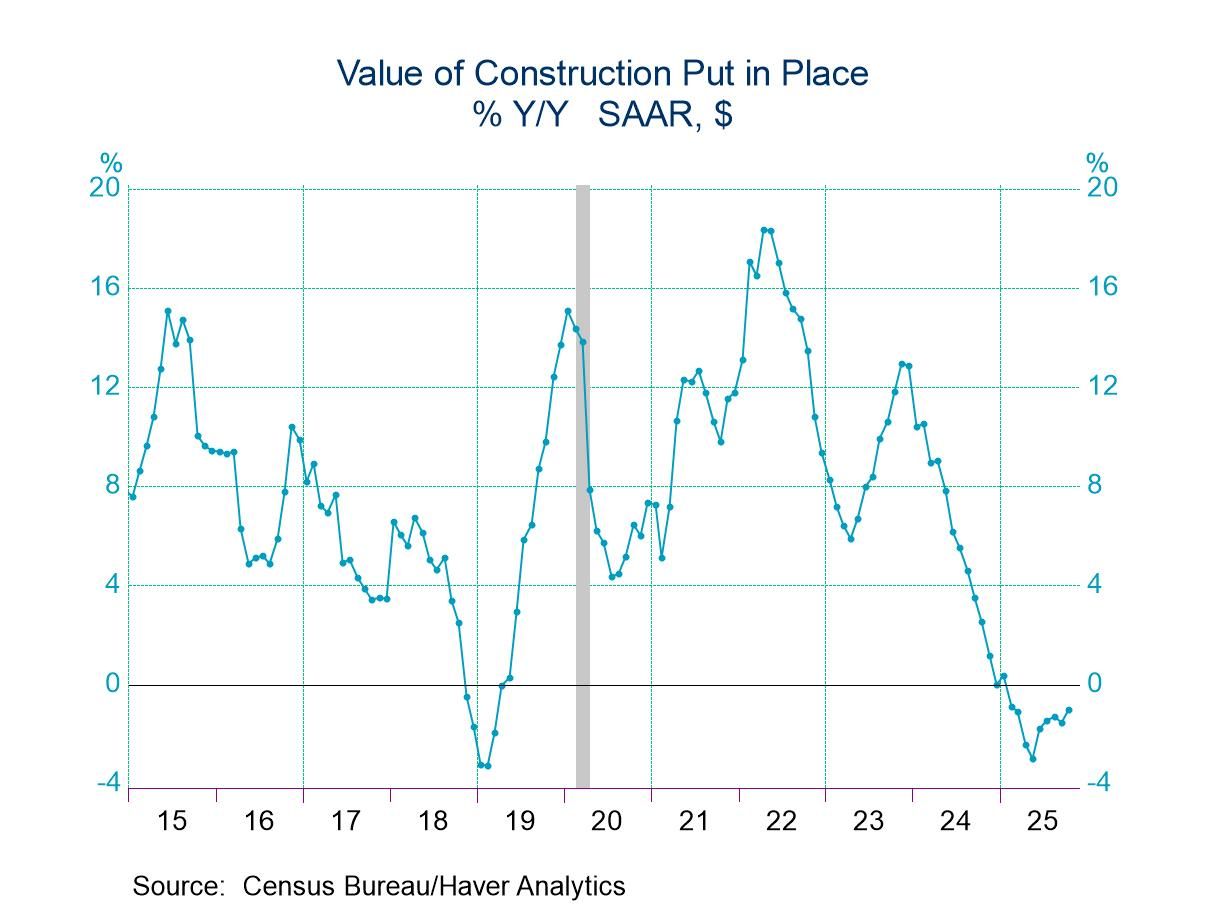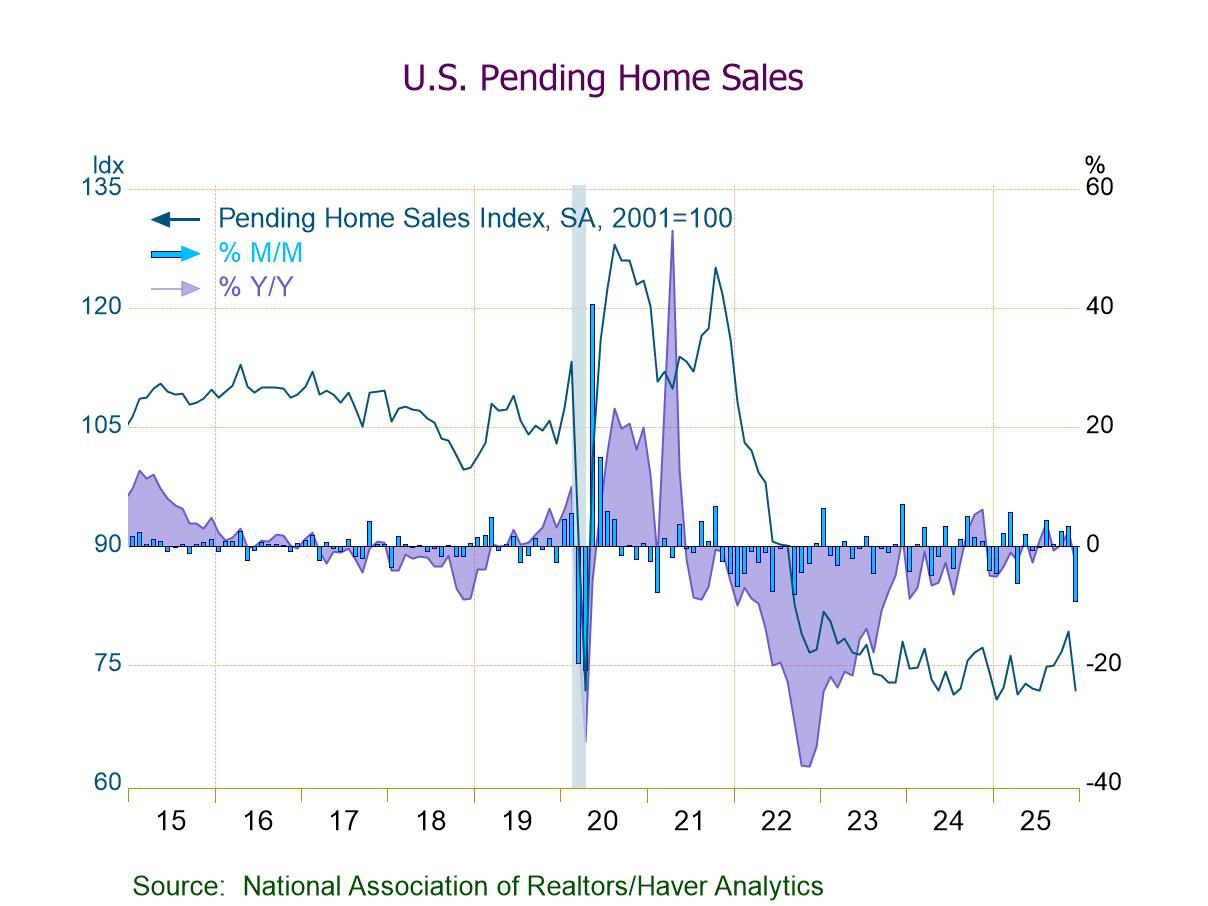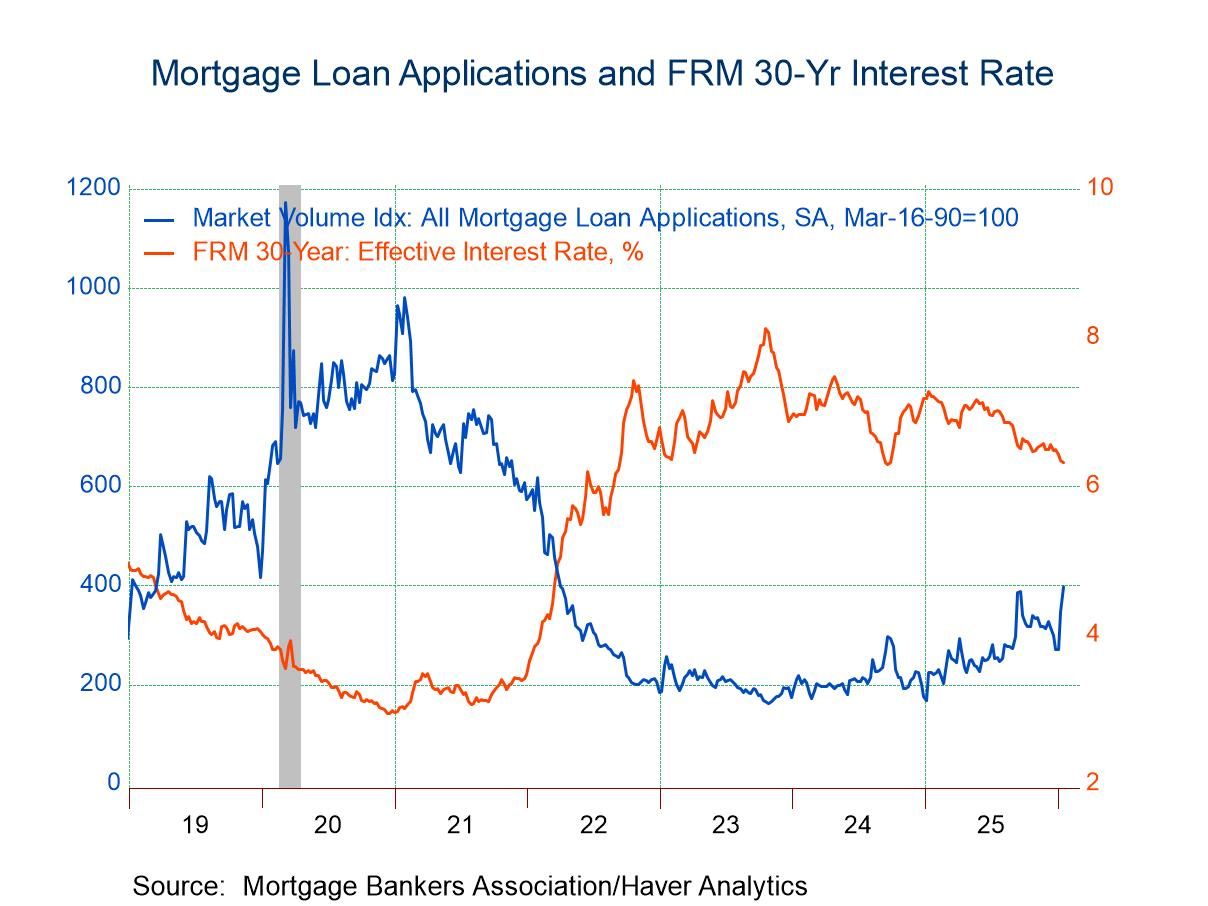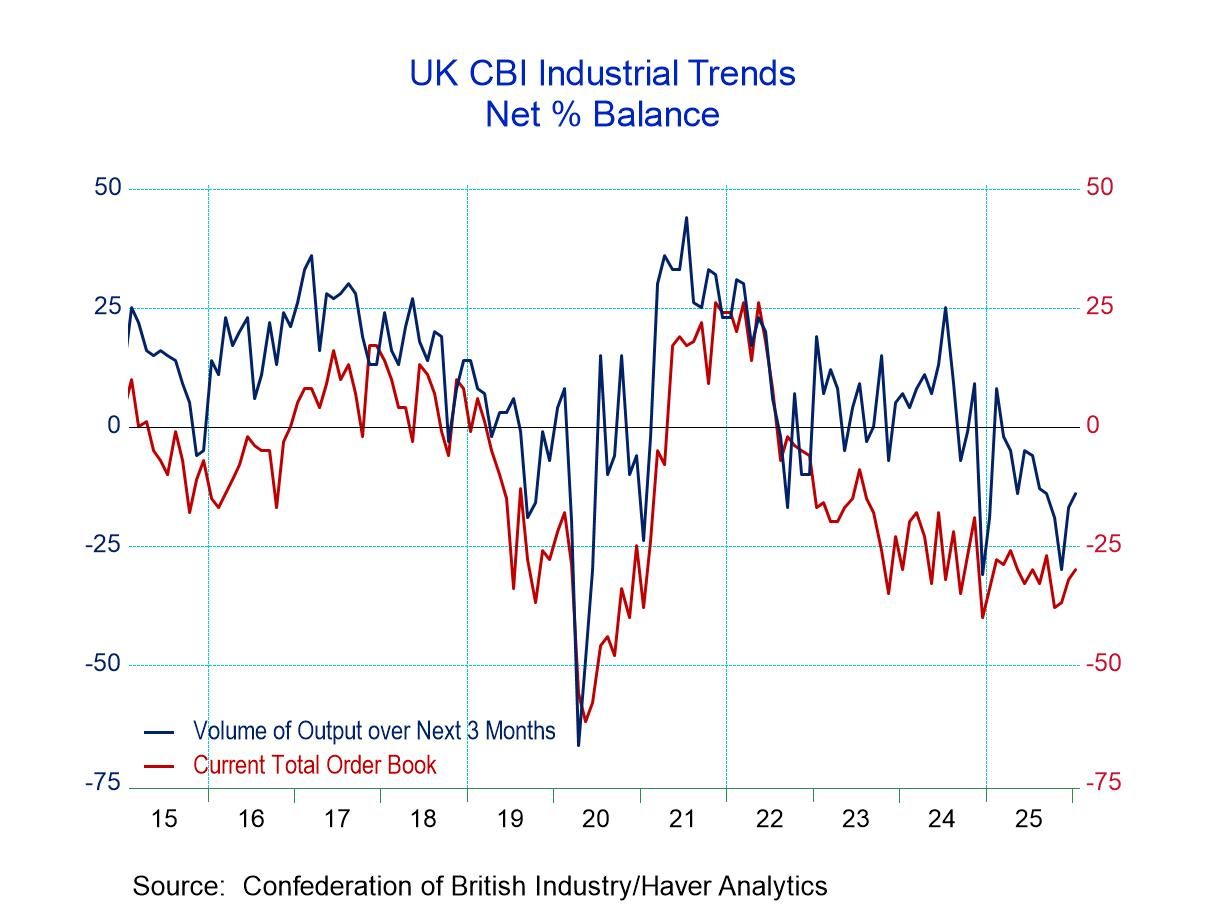French Production Makes Sizeable Gain in December

Industrial production for French manufacturing rose 1.2% month-to-month in December after gaining 0.2% in November and being flat in October. The progression has manufacturing output in France rising from 0.9% over 12 months to a 2% pace over six months to a 16.5% annual rate over three months. This clear accelerating progression is good news for French production. However, quarter-to-date data only show output up at a 0.2% annual rate in the just-completed fourth quarter.
Looking at the components the output of consumer nondurable goods also shows a progression of accelerating output and that is the only component that does that; however, the four components of output consumer durables, consumer nondurables capital goods and intermediate goods show three of them with three-month output growth at a faster pace than 12-month output growth period; the exception is consumer durables that have made a sharp turn lower falling at a 9.2% annual rate over three months compared to a 1.5% gain over 12 months.
The output of autos has been sporadic, but that's not unusual for that sector. Over the most recent three months auto production is up at a 28.2% annual rate compared to -0.8% over 12 months and a sharper -8% annual rate over six months. Consumer spending on autos in France picked up in December after two months of declining, rising by 9.1% month-to-month. Consumer spending on autos is up about 22% over 12 months, then it's up at a 43% annual rate over six months, and then it settles back to a 22% growth rate over three months. This is essentially directionless performance in terms of acceleration, but it does show steady strength and at least an attempt at acceleration over six months on the part of consumers. In many other respects, the French economy has been weak. French GDP has declined in two consecutive quarters, and has annualized year-over-year growth of only 0.6% in Q3 and 0.7% in Q4.
The chart juxtaposes year-over-year industrial production traced out in red against France’s manufacturing PMI that is presented as a level. When the PMI is below 50 manufacturing output is supposed to be declining. We see that from 2020 to early 2021 that rule was obeyed fairly well. Then in later 2021, the PMI stayed at a mid-50 level while output briefly dipped and showed contraction. Later in 2022, the French manufacturing PMI fell below, and then return back to its 50% mark, as industrial output continued to fluctuate between roughly 0 and 3%. In 2023, the PMI decidedly began heading South and moving significantly below the 50% mark down into the mid to lower 40s signaling declines in the manufacturing sector. However, during this period, industrial production moved down to a lower growth trajectory, showing negative growth rates only sporadically. The PMI statistic may not map perfectly into growth, expansion, weakness, and contraction on the part of French manufacturing; however, the two signals are not incompatible either.

It's 2023 the PMI is giving much weaker signals than those from industrial production which is ending the year with a strong month-to-month signal and a weak year-over-year gain. The French economy remains weak. It's facing another round of political activism as farmers are protesting in Paris and trying to disrupt activity over the government's attempt to enforce environmental guidelines by cutting back gasoline subsidies to farmers whose farm equipment runs on gasoline and where profits are under pressure. What is the concept here? Let them use mules? These things never really end well. And there are not too many things that Paris hates a lot worse than a big truckload of farm manure dropped on the Champs Elysee. Stay tuned – and delay that visit to France.
Robert Brusca
AuthorMore in Author Profile »Robert A. Brusca is Chief Economist of Fact and Opinion Economics, a consulting firm he founded in Manhattan. He has been an economist on Wall Street for over 25 years. He has visited central banking and large institutional clients in over 30 countries in his career as an economist. Mr. Brusca was a Divisional Research Chief at the Federal Reserve Bank of NY (Chief of the International Financial markets Division), a Fed Watcher at Irving Trust and Chief Economist at Nikko Securities International. He is widely quoted and appears in various media. Mr. Brusca holds an MA and Ph.D. in economics from Michigan State University and a BA in Economics from the University of Michigan. His research pursues his strong interests in non aligned policy economics as well as international economics. FAO Economics’ research targets investors to assist them in making better investment decisions in stocks, bonds and in a variety of international assets. The company does not manage money and has no conflicts in giving economic advice.






